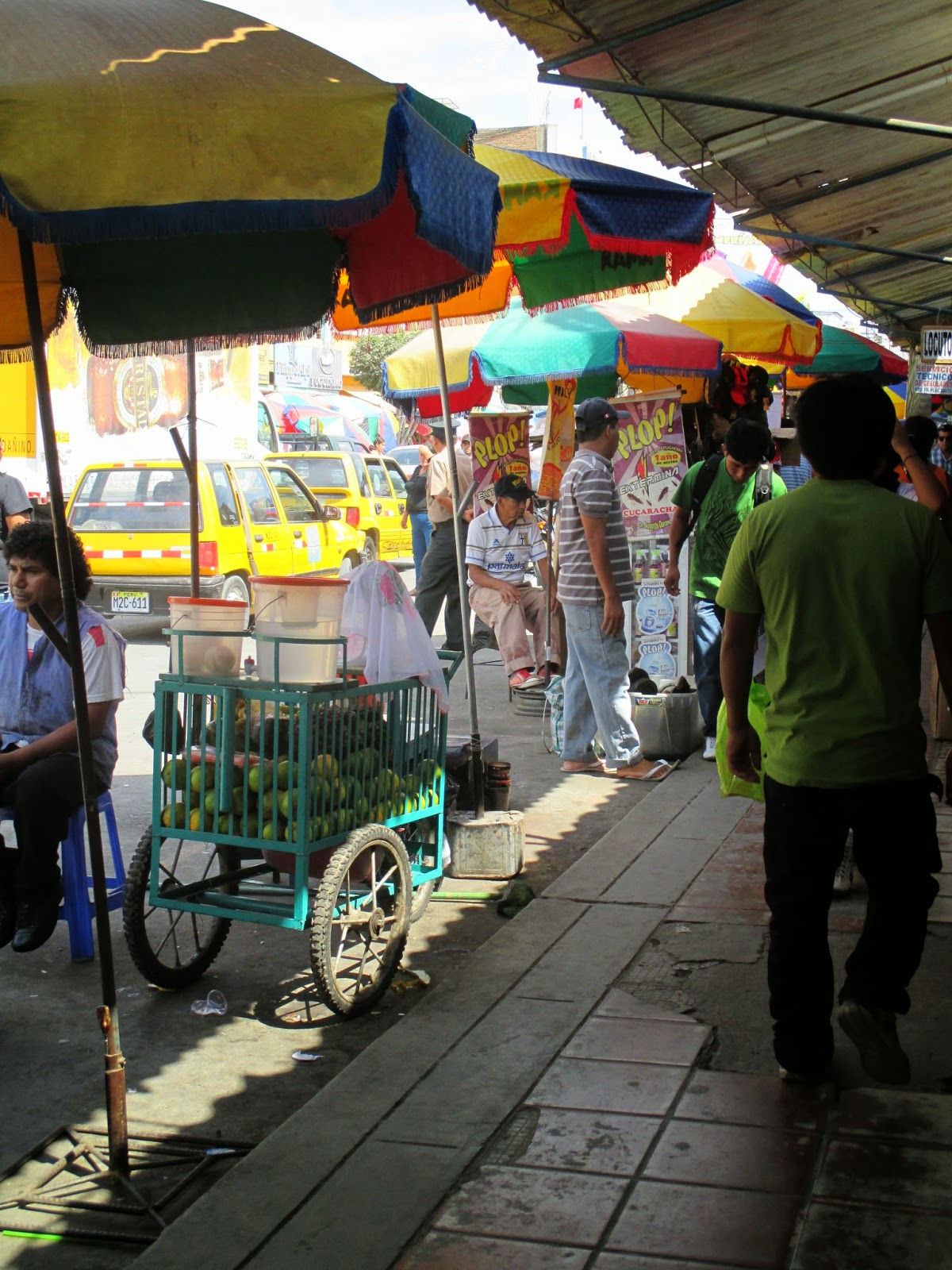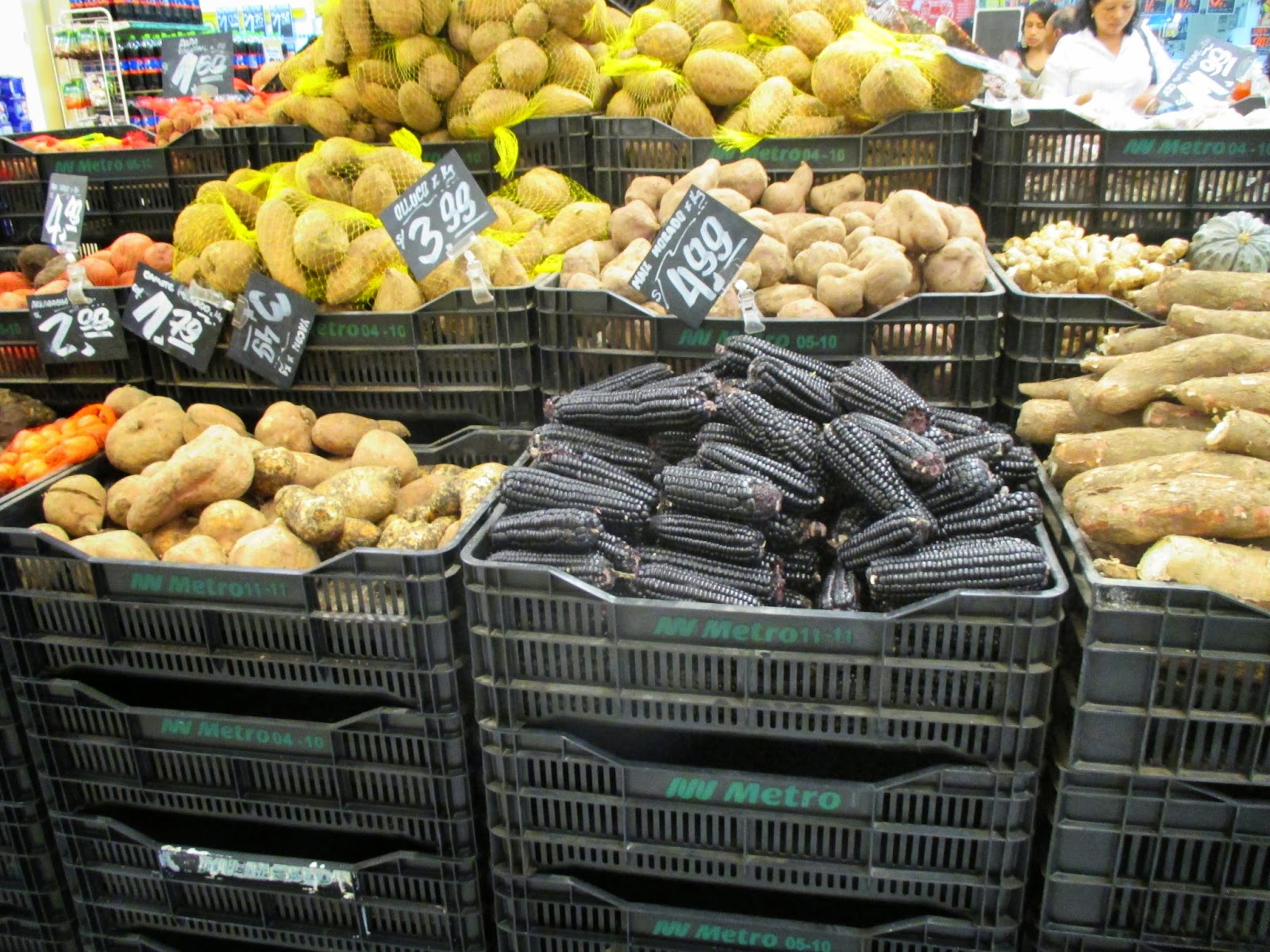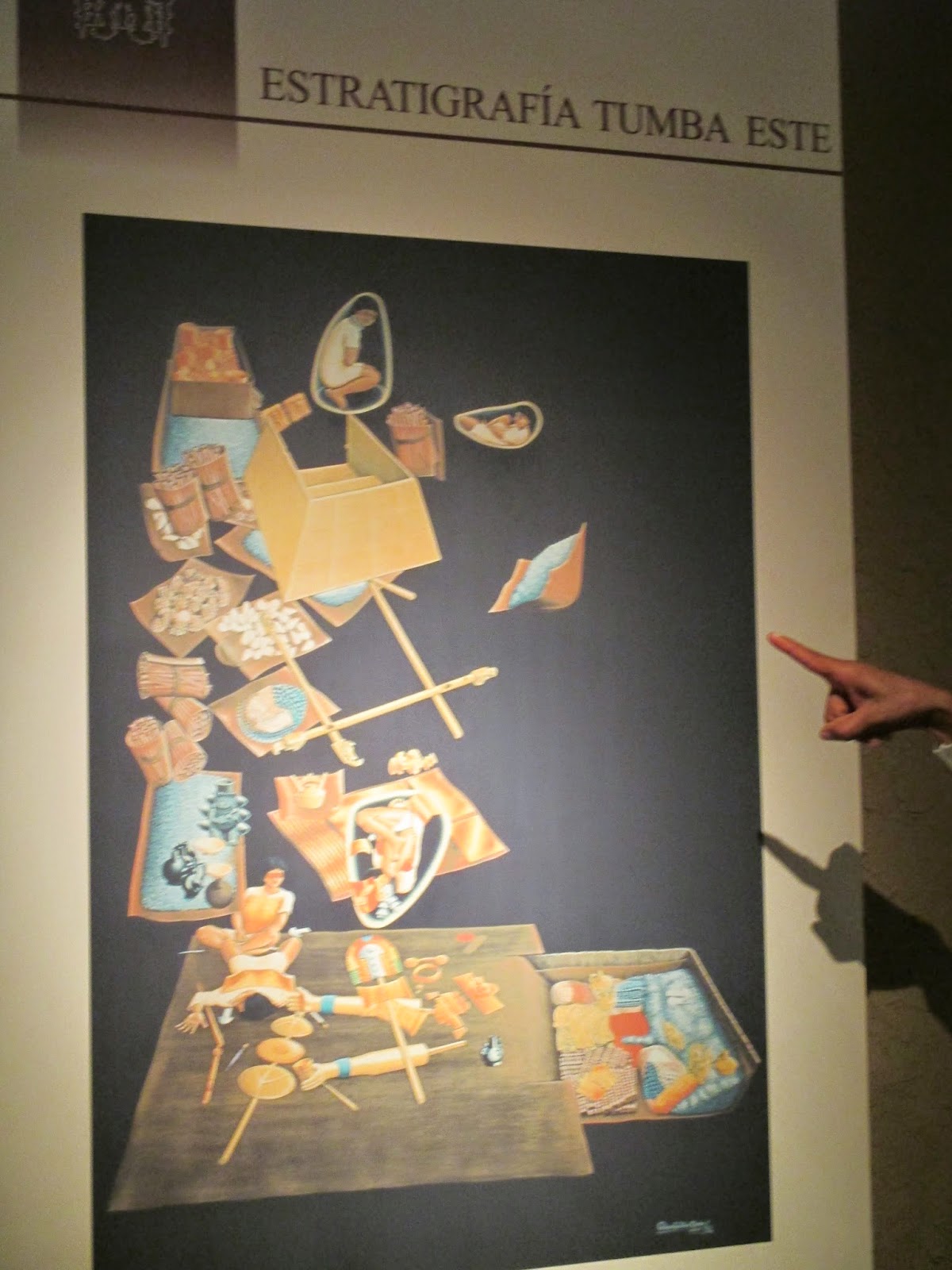Within an hour of arriving in Chiclayo 4 people had told me to be careful as the city is dangerous. I later realized that my hotel was in a ghetto area near a famous market, so I got even more warnings to be careful. The only reason I´d booked that hotel was because it was one of the few I could find available online. Sometimes it´s better to just arrive in a city without a booking and find something, but then there´s always the risk of not being able to find a room.
I ended up switching to a different hotel after the first night, mostly because something bit me in the night. To anybody who thinks traveling the world by backpack is luxurious, there´s so much you have yet to discover about making sacrifices! You don´t want to know about some of the dingy, sketchy places I´ve slept in or the places I´ve gone to the bathroom, for starters.
My room in the ghetto market area had a window from the shower into the room and a view of the dusty streets outside, currently under construction.
mercado de brujas (witches)
I got a haircut here from Mariella for 5 soles (about $2), nothing crazy, just a few layers & some necessary weed whacking of split ends.
Museo de Sicán is dedicated to the Lambayeque culture in the area which lasted from about 600 AD to 1,100 AD before moving to El Purgatorio in Túcume. They were conquered by the Chimus around 1375.
A very elaborate tomb burial.
This guy was burried upside down and decapitated. How do you want to be burried?
Pirámides de Túcume
26 disintegrating adobe structures used for rituals, housing, with plazas and temples.
Recreation of some of the decorations. Writing and speaking arent´t the only methods of communication...
There are portions of broken shells here, washed up from a tsunami.
Museo de Tumbas Reales, where no photos are permitted :( As pointed out by one of the people on my tour - usually a sign of a good museum.
The museum hosts hundreds of artifacts burried with the Señor de Sipán and has very detailed depictions of the complex burial.
He was burried with his wife, a few other women, his general, a child, a dog, 2 llamas, and hundreds of offerings and adornments including but not limited to feathers, jewelry of gold and turquoise, shells, & sceptres. One of his necklaces was gold and in the shape of peanuts. Since peanuts come from the earth, it symbolizes a return to the earth.
It´s fascinating to see how humanity doesn´t change much over time in that hierarchy, vanity, art, ritual, glory, & decline play promiment roles.
¨la muerte no es final¨
Apparently these are famous in the region. Never really figured out how they were gained a reputation of deliciousness...














































No comments:
Post a Comment